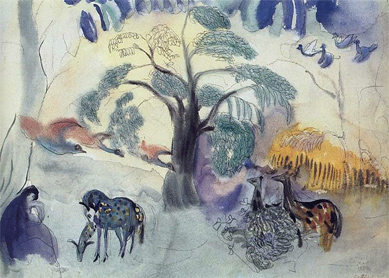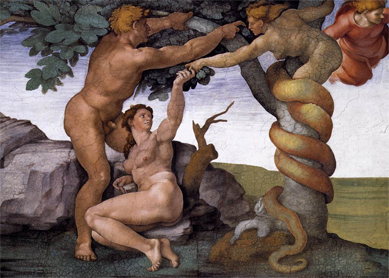Satan tempts Adam and Eve in the garden. A red apple is plucked from a tree. Original sin enters the world.
These are just a few of the images associated with the story of
The first chapters of Genesis contain two distinct accounts of creation. The second account, found in
Genesis’ two creation accounts are written in significantly different styles. While the first account is poetic and structured as a list, the second offers a much more flowing narrative. This second account has proved ripe for interpretation. Think of the serpent that speaks to Adam and Eve; the text does not actually reveal the serpent’s nature or identity. In fact, many scholars point to the prominent, often positive position of serpents in other ancient Near Eastern cultures as a possible influence in this story.
However, during the Second Temple period the association of this serpent with evil would become common in Judaism (1 Enoch, Life of Adam and Eve). It was not a long stretch, then, for readers to equate the serpent with Satan. Indeed, one Christian tradition has long held that the Genesis story was the Protevangelium, the first prediction of Jesus’ victory over Satan (see, for example, the second-century writings of Irenaeus). Many other interpretive traditions have also fleshed out the narrative of the second creation account.
The interpretation of the second creation has also had far-reaching consequences in social and religious spheres. One such example can be seen in
However, this is not the only way to understand this story. Judaism, for example, extracts no such doctrine from this account. Some readers believe this story portrays the first in a series of events found in the primeval history (
From the serpent as Satan to the fall and original sin, the reception of
Bibliography
- Hendel, Ron. The Book of Genesis: A Biography. Princeton: Princeton University Press, 2012.
- Charlesworth, James H. The Good and Evil Serpent: How a Universal Symbol Became Christianized. New Haven: Yale University Press, 2010.
- Fretheim, Terence E. “Is Genesis 3 a Fall Story?,” pages 144–53 in Word and World 14 (1994).





